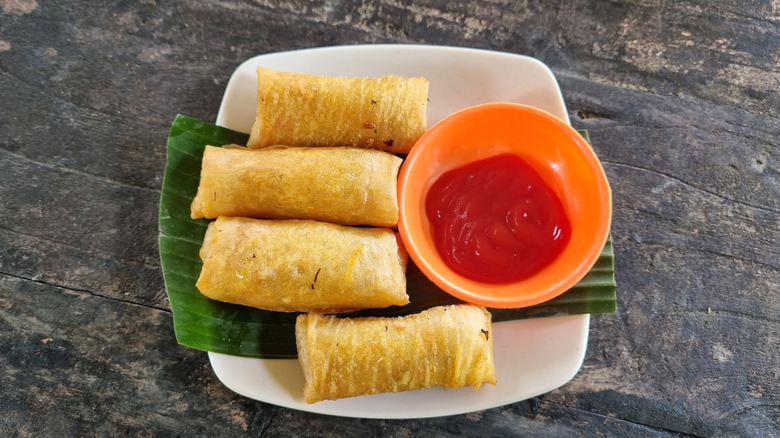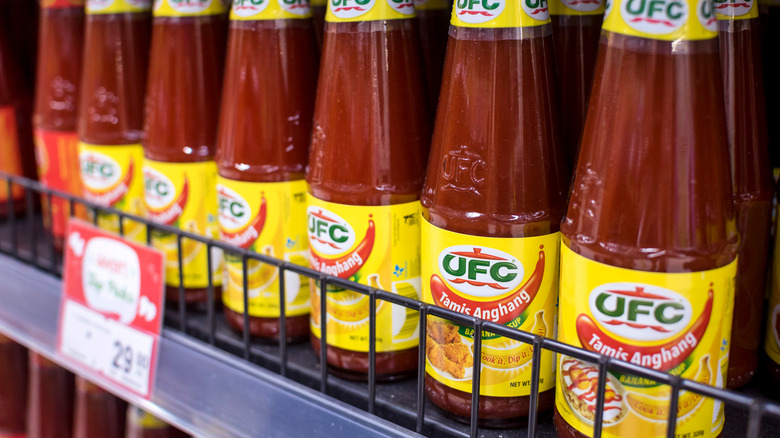Banana Ketchup Vs Tomato Ketchup: How Do These Condiments Differ?
Though you don't hear of them too often, there are alternative types of ketchup beyond tomato in this wide culinary world of ours (mushroom ketchup, anyone?). One of them, banana ketchup, comes from the Philippines. Visually, it looks like tomato ketchup, with a glossy texture and a similar red hue, but at its core, it's made with a banana puree base. Vinegar and spices are added to give it some extra flavor, and the result is a condiment that is indeed ketchup, but with a personality all its own.
The end product is sweeter and yes, even fruitier. It does have that vinegary tang many enjoy when it comes to the tomato variety, just with less of an umami note. You can typically find it at Asian grocery stores in the sauce and condiment section, and it's hard to miss thanks to that bright red color. One thing to note while you're scanning the shelves: It is sometimes labeled with the name "banana sauce" rather than "banana ketchup."
Common brands include Jufran and UFC. You might not have seen them some months back, thanks to a snag with the Federal Drug Administration (FDA) due to a banned ingredient in some banana ketchups (potassium iodate). Imports were temporarily halted, causing a bit of panic buying. The restriction has since been lifted in June 2025, so if your favorite store ran out of its usual stock, it should now be back.
How to use banana ketchup
Banana ketchup has a sweetness that works particularly well with savory notes. Try adding it to fried foods, like chicken or fries, because it contrasts the salty notes nicely. And yes, you can definitely taste the banana if you're searching for that flavor. It's also used in many versions of Filipino spaghetti, which is famously very sweet and contains ground meat and sliced hot dogs, found at the Filipino fried chicken chain Jollibee.
That being said, this Filipino condiment isn't always ideal for substituting tomato ketchup. It won't fully take the place of your beloved Heinz since the lack of tomatoes does subtract quite a bit of savoriness. So you wouldn't want to use it in place of tomato ketchup on something like a from-scratch sloppy joe recipe, where you do want a little bit of umami element. Instead, consider doing things like mixing it into sauces to create a glaze where you're specifically looking for something sweet, like finishing something you'll be tossing on the grill. The sugar in it will caramelize to create a clingy sauce. If you're still unsure, visit a Filipino restaurant to see just how it fits in with the food — then you can learn how to use it yourself at home.

